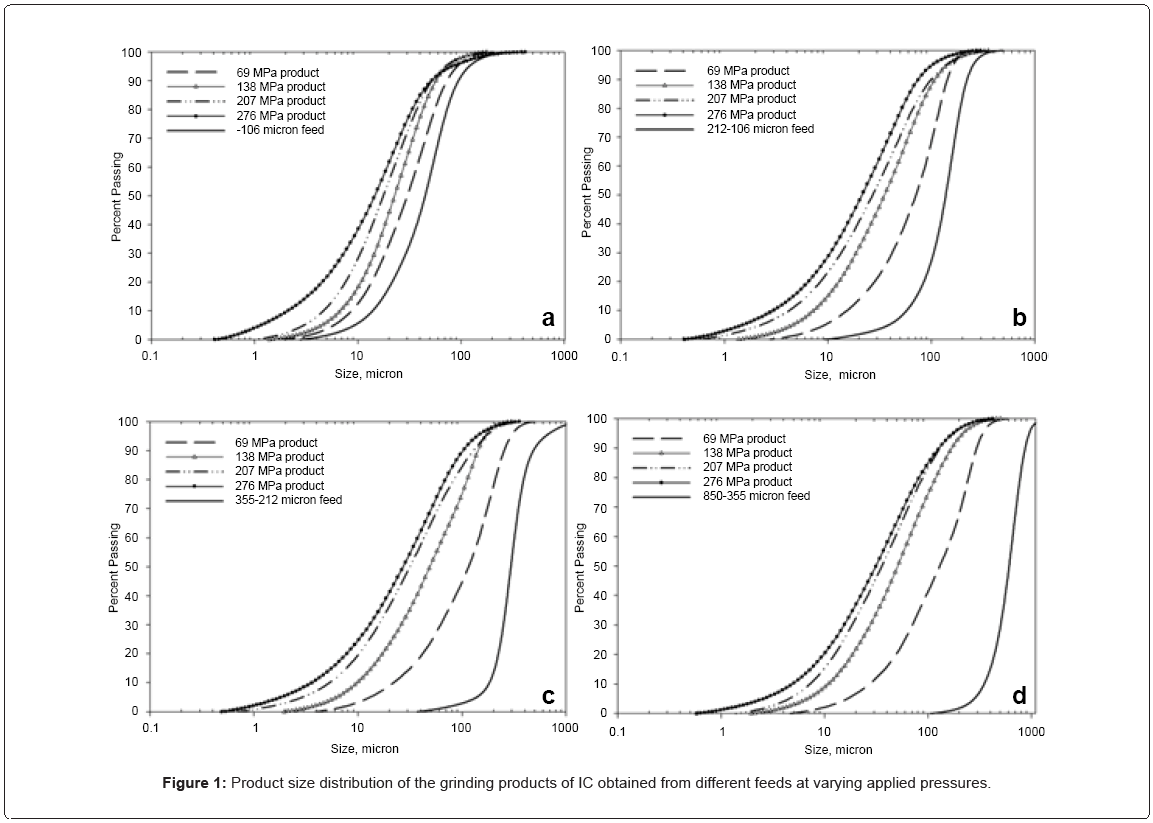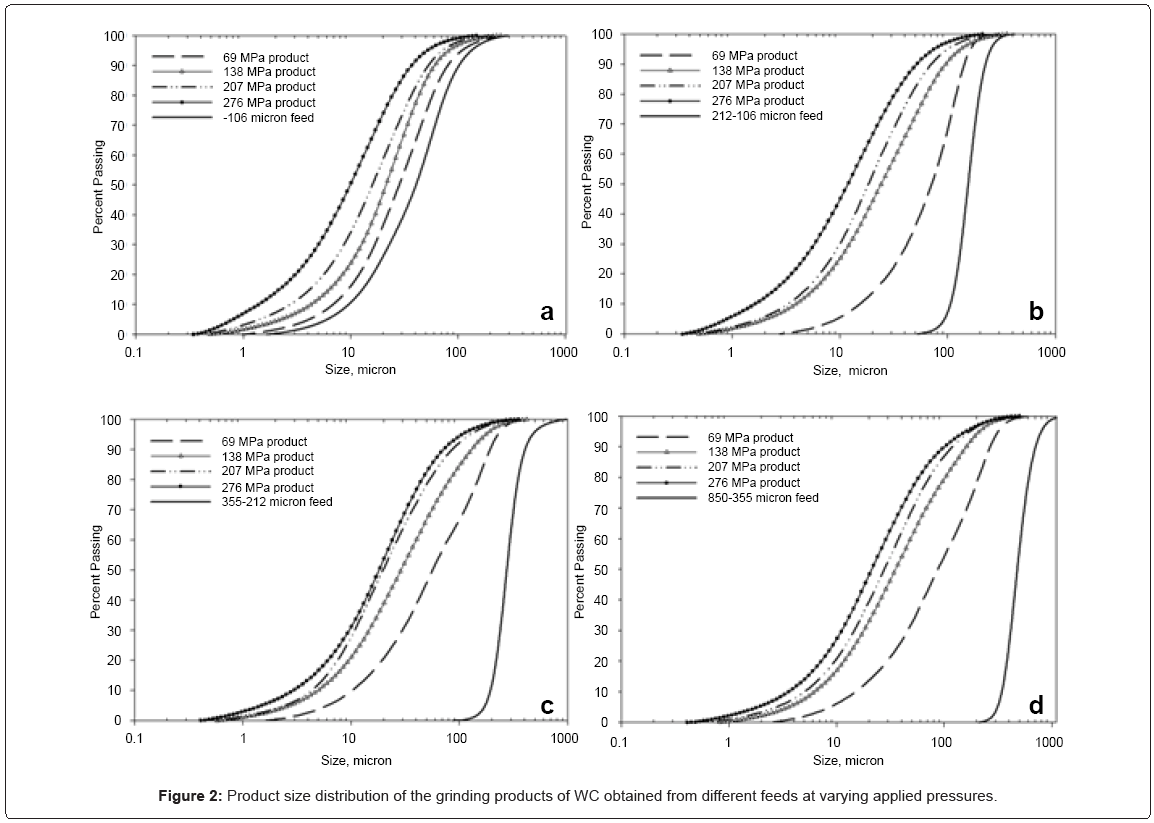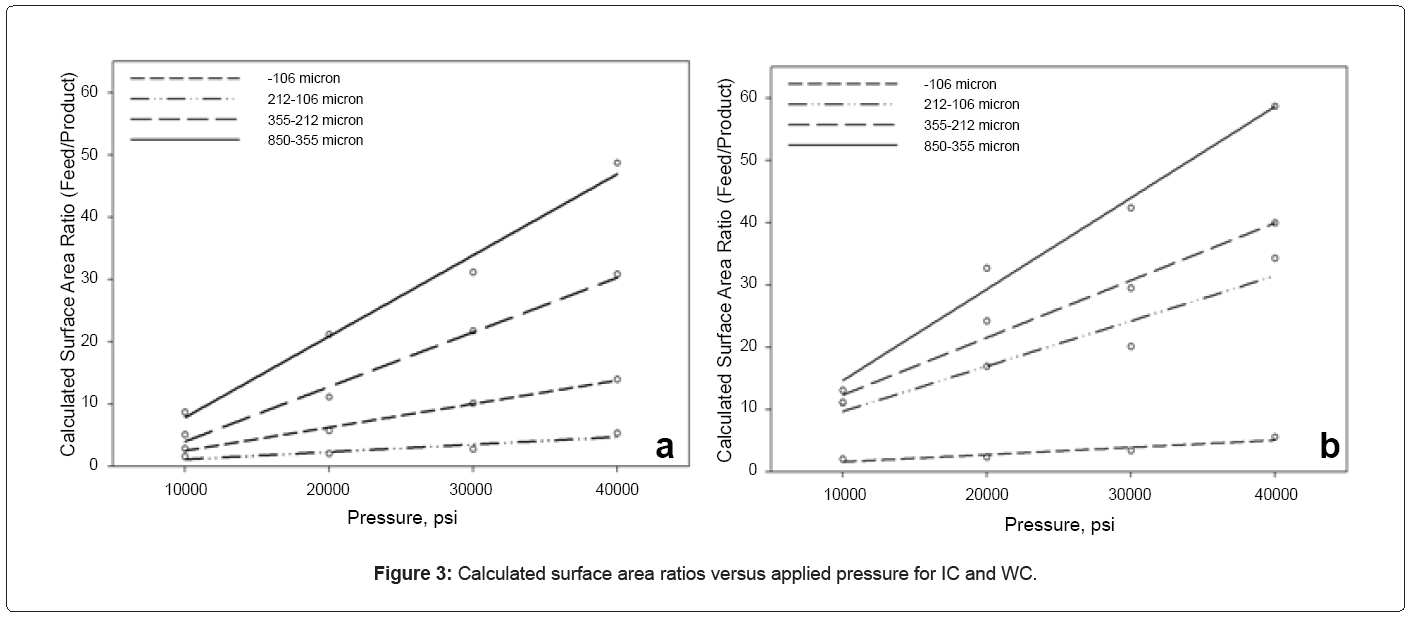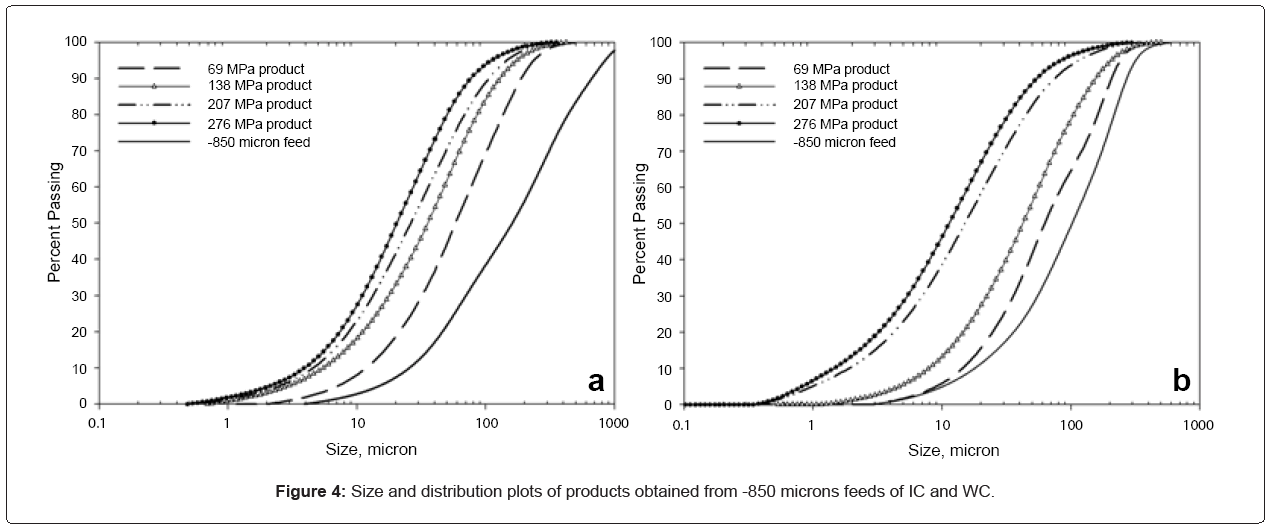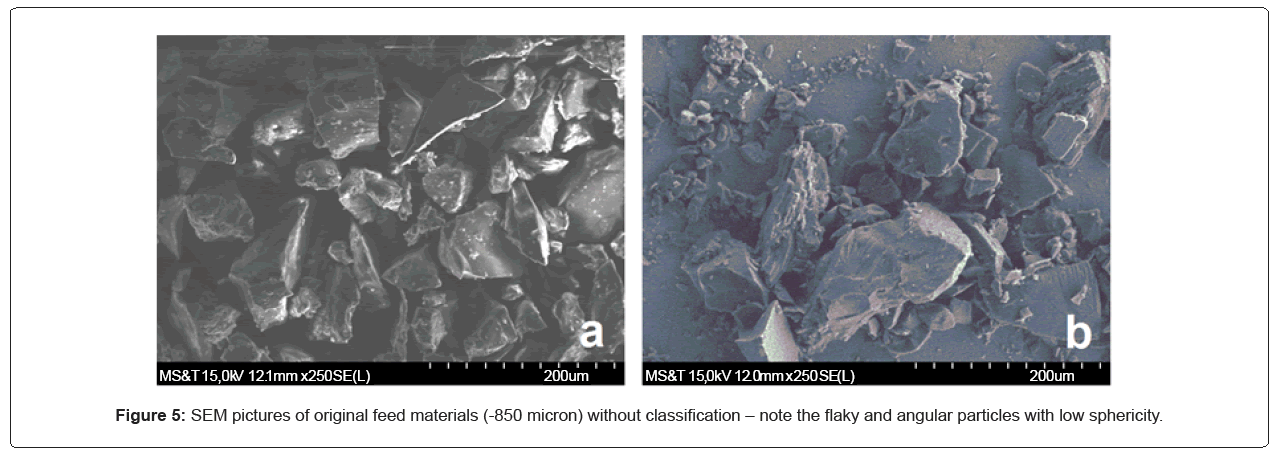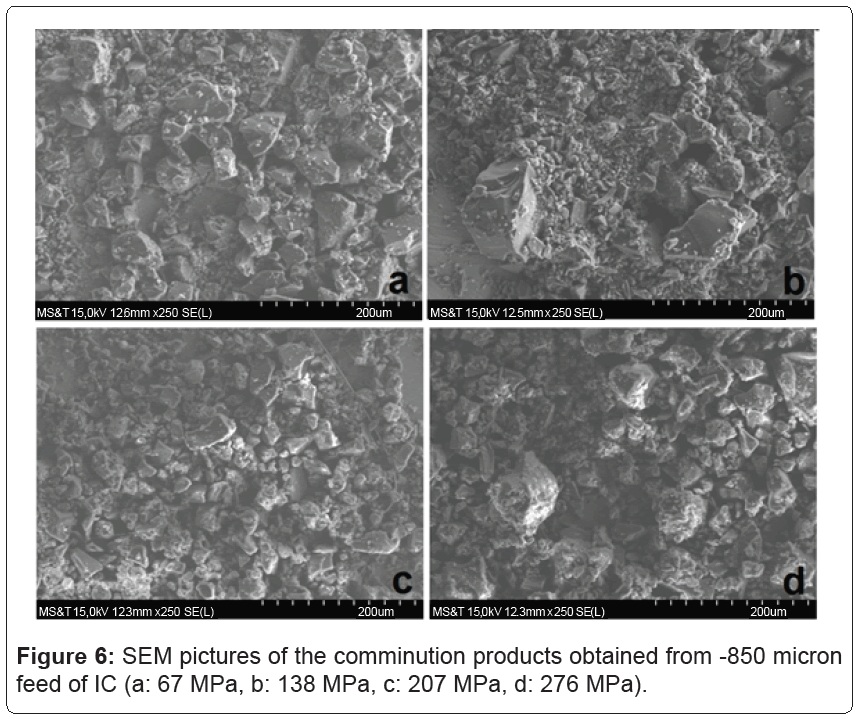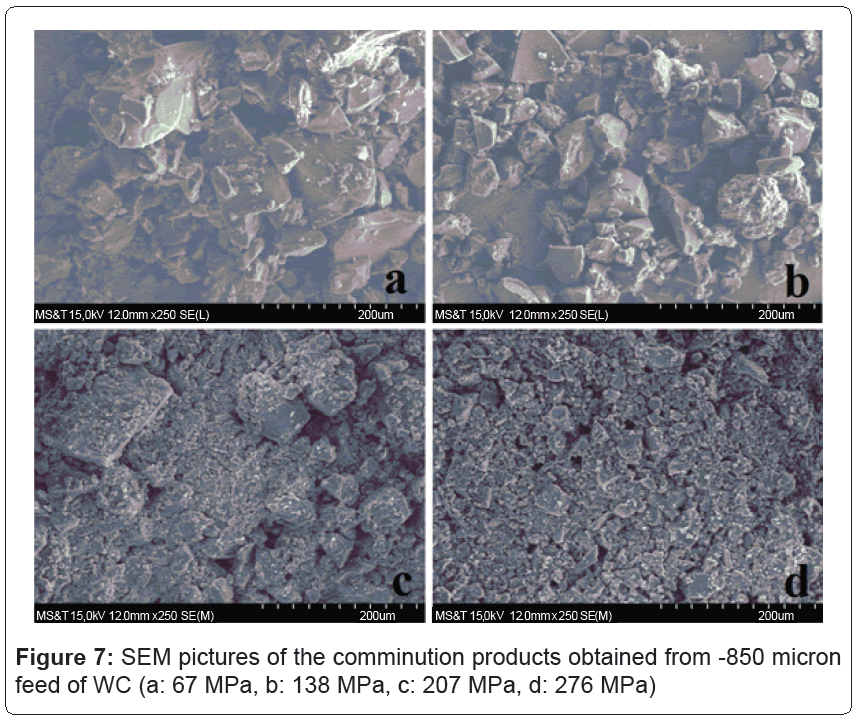Special Issue Article Open Access
New Method of Coal Comminution to Ultrafine Size
Greg Galecki*, Gul Akar and Sezai SenDepartment of Mining and Nuclear Engineering, Missouri University of Science and Technology, Rolla, MO, USA
- *Corresponding Author:
- Greg Galecki
Department of Mining and Nuclear Engineering
Missouri University of Science and Technology
Rolla, MO, USA
E-mail: ggalecki@mst.edu
Received Date: January 15, 2013; Accepted Date: January 17, 2013; Published Date: January 26, 2013
Citation: Galecki G, Akar G, Sen S (2013) New Method of Coal Comminution to Ultrafine Size. J Powder Metall Min S1:005. doi: 10.4172/2168-9806.S1-005
Copyright: © 2013 Galecki G, et al. This is an open-access article distributed under the terms of the Creative Commons Attribution License, which permits unrestricted use, distribution, and reproduction in any medium, provided the original author and source are credited.
Visit for more related articles at Journal of Powder Metallurgy & Mining
Abstract
Research into the use of coal for power generation has become more important to deliver next-generation
solutions for advanced coal cleaning technologies required by near-zero emissions. Comminution of coal with
waterjets to ultrafine particle size offers a new and promising method for producing coal-water fuel (CWF), which is a replacement for power generation products. In this paper the results of coal comminution in a waterjet-based mill are presented for the range of pressures up to 276 MPa using four groups of feed size ranging from minus 850 micrometers to less than 106 micrometers. The focus of studies was on particle size reduction and distribution. The results presented in this paper are part of ongoing studies of coal-water fuel optimization for power generation.
Introduction
As Antoine de Saint-Exupery said, “A civilization is built on what is required of men, not on that which is provided for them.” Today’s world requires affordable energy. Coal has always been one of the most reliable energy sources throughout history. However, developing advanced coal cleaning technology has become crucial for the sustainable use of coal today [1]. The use of coal in the form of slurry offers the potential to make the use of coal cleaner and comparable to heavy oil [2].
The coal-water slurry is a stable fluid that can be pumped and burnt as efficiently as conventional fuels. CWF has a great potential for efficient replacement of oil in boilers and furnaces. It has been successfully used in diesel engines. As reported by Lee [3], CWF is used in many countries, including US, Russia, Japan, China and Italy.
In the process of CWF preparation, the properties of solids are very important. Particle size and distribution provides the basis for production of high-concentration coal-water slurry [1]. The use of a small amount of additives stabilizes the coal-water slurry by uniformly dispersing the coal particles in the suspension, which helps maintain a concentration of up to 70% [2,4-9]. Depending on the application, there are different requirements for CWF. The term CWS (coal-water slurry) is often used interchangeably with CWF. In general, the coal particle size distribution for CWS should be wide, and preferably bimodal. Table 1 gives a typical particle size distribution of CWS for use in different applications.
| Property | Current CWS for boiler | Gas turbine | Diesel engine |
|---|---|---|---|
| Mean Particle Size (µm) |
10-20 | 4-6 | 5-15 |
| Particle Size (µm) -5 -10 -20 -75 -250 -500 |
% Mass passing | ||
| 5 35 50 75 95 100 |
60 100 |
30 60 100 |
|
| Coal content (w/w) | 65-70 | 55-60 | 50-55 |
| Viscosity, mPaS @100S-1 | 500-1000 | 400 | 300 |
Table 1: Some properties of high concentration CWS (8).
Coal needs to be ground to an appropriate size for use in the preparation of coal water slurries. The energy requirements in conventional grinding processes dramatically increase with the desired ground product sizes. It has been shown that more than 96% of energy spent in current comminution processes is wasted [10]. The sustainable development and utilization of coal requires more efficient comminution methods. For that reason, a new generation of grinding mills has been introduced as alternate low energy comminution systems.
As introduced by Galecki and Mazurkiewicz [11,12], waterjets can be efficiently used for grinding of coal. The slurry is injected into the cavitation chamber to enhance the particle size reduction during combination with waterjets [11,13-15]. The process provides size reduction of minerals by inducing failure under tensile stresses, and is reported as a selective and efficient crushing process by different researchers for different materials. Size reduction is achieved by the combined effects of rapid dynamic shear stress, cavitation bubble growth and collapse, and the direct impact of particles against a rigid anvil. The degree of the forces involved in grinding determines the product properties [16-21]. Hlavac et al. [18] studied material comminution by waterjets using various mixing chamber configurations. Hlavac et al. [18] then proposed a model to quantitatively assess the particle size reduction. The effects of different parameters on grinding of coal using a high pressure waterjet mill were investigated individually by Cui et al. [10] based on fractal dimensions of the products. Later, the use of high pressure waterjet comminution techniques in preparation of ultraclean micronized coal slurry was studied by Cui et al. [22].
In this study, coal samples were ground using a water jet mill consisting of an abrasive cutting head/cavitation cell set up under different operational conditions to determine the size reduction behavior of coal particles in the waterjet mill. For the purpose of the study, the product distributions were evaluated in terms of the equivalent volume mean diameters and calculated surface area values.
Materials and Methods
Two different bituminous coal samples were used in this study and are referred to as IC with 11% of ash and WC with 2.83% of ash. Run- of-mine coal samples were crushed to minus 5 mm by a jaw crusher and the particle size of the material was then reduced to 0.850 mm by secondary crushing. After homogenization, the sample was classified into different particle size fractions (850-355, 355-212, 212-106, 106 micron) using dry sieving.
The experiments were carried out using a specially designed cavitation cell coupled with a conventional abrasive cutting head. The parameters used were the upstream pressure and feed particle size. A Microtrac S3500 series particle size diffractometer was employed to determine the comminution product properties. The particle sizes of the ground products presented in this paper were all given in terms of “equivalent volume mean diameter”.
Results and Discussions
During the test, mono size and original feed samples were exposed to waterjet action in the mill at various pressures. Then, the grinding products were evaluated based on particle size volume distribution and equivalent mean particle size. The distribution profiles of ground products obtained from minus 106 microns mono size fraction (feed) at different pressures are shown in figures 1a and 2a. It can be seen that the higher applied pressure results in finer products. However, it should be noted that limited size reduction can be obtained for these fine feeds which had equivalent volume mean diameters of 51.66 (IC) and 50.28 (WC) microns. The calculated surface area ratios were very low for both coal samples (Figure 3a, 3b).
The equivalent volume mean diameters for the mono size feeds of 212-106 microns were found to be 140.4 microns for the IC and 161 microns for WC. The mean particle size of the grinding products obtained from IC coal varied between 75.39 and 32.80 microns for the lowest and highest applied pressures (Figure 1b). Under the same conditions, finer products were generated from WC coal which had 46.99 microns and 21.30 microns for the lowest and highest applied pressures. Overall surface area ratios were found to be higher than those obtained from minus 106 micron feed. For this size fraction, the process seems to be more effective on grinding of WC coal (Figure 3a, 3b).
The mono size feed materials of 355-212 had equivalent mean diameters of 325 microns for the IC and 293.1 microns for the WC. As shown in figures 1c and 2c, a limited amount of fines were generated at 69 MPa. However, the incremental increase of pressure from 69 MPa to 276 MPa resulted in the production of finer particles. Higher surface area increases were obtained for WC again. The coarsest mono size feeds used in this study were 850-355 microns with equivalent mean diameters of 611.6 microns for the IC and 504.9 microns for the WC. Depending on the applied pressures, the mean particle size of the ground products varied between 119.4 microns (at 69 MPa) and 41.08 (microns at 276 MPa) for WC coal. Under the same conditions the coarsest products had a mean diameter of 149.6 microns for IC coal.
As shown in figure 3, the ratios between the calculated surface area of the comminution products and feed materials are directly proportional to the applied pressure for both coals. It is important to note that the highest increase in the calculated surface area was achieved for the coarsest feeds.
For reference purposes, figure 4 shows the comminution products of the original feed materials without classification. As determined with the use of the Mictrotrac S3500, the mean particle size of the original feeds were 257.5 microns (for the IC) and 127.8 microns (for the WC). The mean particle size of the comminution products at the highest applied pressure of 276 MPa were determined as 33.68 microns for the IC and 22.60 microns for the WC. These changes clearly show the effect of pressure on the particle sizes and distribution.
The other property of the particles, other than their sizes and distribution, was the transition of the particle shape as a function of applied pressure. Figure 5 shows SEM pictures of the original feed material. The observed particles present a characteristic morphology of crushed coal with well-defined edges and angles with a variety of shapes, suggesting breakage along the grain boundaries.
Figures 6 and 7 shows the comminution products that result from various upstream pressures. The increase in the amount of fine particles is visible. The details about the transition of particle size, distribution and shape are given in the analysis of comminution products resulting from each pressure applied. At 69 MPa, particles retained their angular and flaky shape, with low sphericity as shown in Figures 5a and 6a. When the pressure was increased to 138 MPa, Figures 5b and 6b show the increasing amount of fines but particles are still coarse, flaky and maintain low sphericity. When the pressure was increased to 207 MPa, Figures 5c and 6c show rounded sharp edges of the particles. There is a noticeable increase in the number of subangular shaped particles with medium level sphericity. At the highest pressure applied in this series of experiments, 276 MPa, the ground product consists mostly of fine particles with sub-rounded and rounded shapes associated with medium sphericity (Figures 5d and 6d).
Conclusions
In the quest for a new method of coal comminution, the use of a waterjet for low ash coal grinding to ultrafine sizes proves to be efficient when size reduction is taken into consideration. It was found that the use of higher pressure resulted in reduction of the mean product diameter. A SEM study of the comminution products showed the transition in the shapes of the particles from very angular with low sphericity achieved at low pressures to sub-rounded particles with medium sphericity with the pressure increase within the range for these experiments.
References
- Weidong W, Lei W, Chenglian Z (2010) Particle size distribution control of coal-water slurry with effective medium model, Database Technology and Applications (DBTA). 2nd International Workshop.
- New Energy and Industrial Technology Development Organization.
- Lee S, Speight JG, Loyalka SK (2007) Handbook of Alternative Fuel Technologies. CRC Press.
- Harmadi E, Suwarmin, Machmudah S, Winardi S (2002) Effect of particle size distribution on rheology and stability of high concentration coal-water mixture (CWM) with Indonesian low rank coal. Journal Teknik Mesin 2: 93-98.
- Boylu F, Dincer H, Atesok G (2004) Effect of coal particle size distribution, volume fraction and rank on the rheology of coal–water slurries. Fuel Process Technol 85: 241–250.
- Xu S, Shu C, Chunyan H (2004) Ultrasonic attenuation measurement of particle grain size. Journal of Scientific Instrument 25: 1-2.
- Boylu F Atesok G (2005) Turkish coals from different coal-water slurry technology, atomization characteristics of the structure. Madencilik 44: 3-12.
- Boylu F, Atesok G, Dincer H (2005) The effect of carboxymethyl cellulose (CMC) on the stability of coal-water slurries. Fuel 84: 315-319.
- Wibberley L, Palfreyman D, Scaife P (2008) Efficient use of coal water fuels, CSIRO Energy Technology, Australia.
- Cui L, An L, Gong W (2006) Effects of process parameters on the comminution capacity of high pressure waterjet mill. Int. J. Miner Process 8: 113-121.
- Galecki G, Mazurkiewicz M (1988) Invention Disclosure 88-UMR-050, High Pressure Liquid Jet Mill for Comminuting Minerals into Fine Particles, Rolla, USA.
- Galecki G, Mazurkiewicz M (1987) Hydroabrasive cutting head-energy transfer efficiency. Proceedings of the 4th U.S. Waterjet Conference, California, USA.
- Galecki G, Mazurkiewicz M, Jordan R 91987) Abrasive grains disintegration effect during jet ejection. In Proceedings of International water jet symposium, China.
- Galecki G, Mazurkiewicz M (1988) Direct Injection of Coal into Cavitation Cell for the Purpose of Comminution. 9th International Symposium on Jet Cutting Technology, Sendai, Japan.
- Galecki G, Mazurkiewicz M (1989) Effectiveness of Coal Comminution by High Pressure Waterjet". Paper presented at the 5th American Water Jet Conference, August 28-31, Toronto, Canada, pp. 285 – 295.
- Galecki G, Summers DA (2000) Comparison between abrasive fragmentation in conventional high pressure jetting and the abrasive slurry. Proceedings of the 6th Pacific Rim International Conference on Water Jet Technology,Sydney, Australia.
- Galecki G (2002) Zachowanie sie scierniwa w konwencjonalych (AWJ) i zawiesinowych (ASJ) systemach ciecia wodno-sciernego (in Polish), In proceedings of the XXV Scientific School of Abrasive Machining, Wroclaw - Duszniki Zdroj, Wroclaw, Poland,pp. 131 - 142.
- Hlavac LM, Hlavacova IM, Jandacka P, Zegzulka J, Viliamsova J et al. (2010) Comminution of material particles by water jets-Influence of the inner shape of the mixing chamber. International Journal of Mineral Processing 95: 25–29.
- Weili G, Mei F (1998) New development of jet mill technology and study on mechanism of comminution with high pressure water jet. Chemical Engineering Processing 6: 30-33.
- Zonghao L, Zhinan S (2005) Wet comminution of raw salt using high-pressure fluid jet technology. Powder Technol 160: 194-197.
- Chu-Wen G, Lin-Sheng L, Dong-tai H, Ai-min L, Dong-hai Z (2007) Comminution of mica by cavitation abrasive water jet. Journal of China University of Mining and Technology 17: 251–254.
- Cui L, An L, Gong W, Jiang H (2007) A novel process for preparation of ultra-clean micronized coal by high pressure water jet comminution technique. Fuel 86: 750-757.
Relevant Topics
- Additive Manufacturing
- Coal Mining
- Colloid Chemistry
- Composite Materials Fabrication
- Compressive Strength
- Extractive Metallurgy
- Fracture Toughness
- Geological Materials
- Hydrometallurgy
- Industrial Engineering
- Materials Chemistry
- Materials Processing and Manufacturing
- Metal Casting Technology
- Metallic Materials
- Metallurgical Engineering
- Metallurgy
- Mineral Processing
- Nanomaterial
- Resource Extraction
- Rock Mechanics
- Surface Mining
Recommended Journals
Article Tools
Article Usage
- Total views: 15173
- [From(publication date):
specialissue-2013 - Apr 04, 2025] - Breakdown by view type
- HTML page views : 10521
- PDF downloads : 4652

